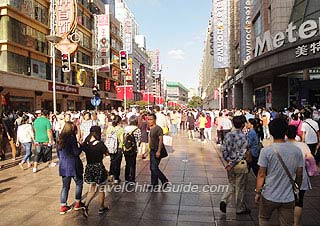Information from a conference on December 9th reveals that Shanghai is expected to be one of China’s first cities to offer tax rebate to inbound visitors. Although the policy has not been ratified by the central government yet, the related department has begun choosing duty refund agency and designated stores.
Currently, tax rebate is implemented in Hainan Island, the southernmost province in China. To enjoy the policy, inbound visitors need to spend at least CNY800 at the same designated store on the same day. Also, they cannot live in China for over 183 days continuously before the purchase is made, and need to leave the country in 90 days after purchasing. The type of tax rebate is value added tax and the rebate rate is 11%.
Shanghai is probably to make the minimum required spending as low as CNY 500. However, designated stores, applicable items, limits of quantities, and other detailed rules are not revealed yet.
|
|
Once implemented, the policy will help Shanghai to draw more attention from the world, and create a supportive environment for inbound tourism and retailing. Besides, Shanghai Disneyland is scheduled to be opened by the end of 2015 to draw numerous visitors. At that time, the tax rebate policy may act as a “supporting facility” to promote growth in consumption.
However, as the policy can only be enjoyed by inbound visitors, it will not be as popular and money-making as in European countries. Here are three reasons: international brands are more expensive in China than in Europe countries; people may be unwilling to purchase goods available in their home countries already; Chinese tourists make great contributions during the popularity of tax rebate in Europe and they are excluded in Shanghai’s tax rebate. In fact, the giant consumption potentiality is hidden in China. According to a survey, the average overseas consumption per Chinese has made is Euro 1,508, ranking first among world’s other tourists and 3-5 times compared with some European and American residents.
Hence, from the perspective of digging consumption capacity, it may be more effective to break through the policy and create more chances for Chinese to purchase duty free goods within their territory.

